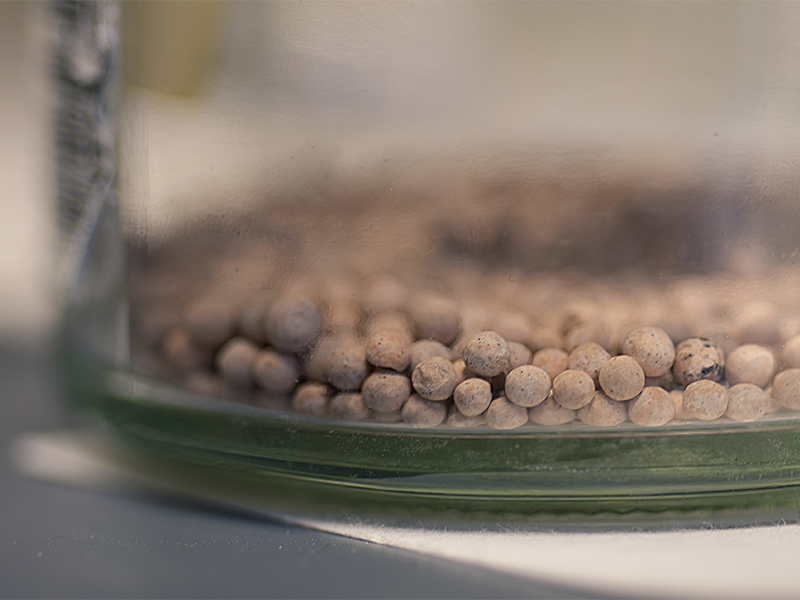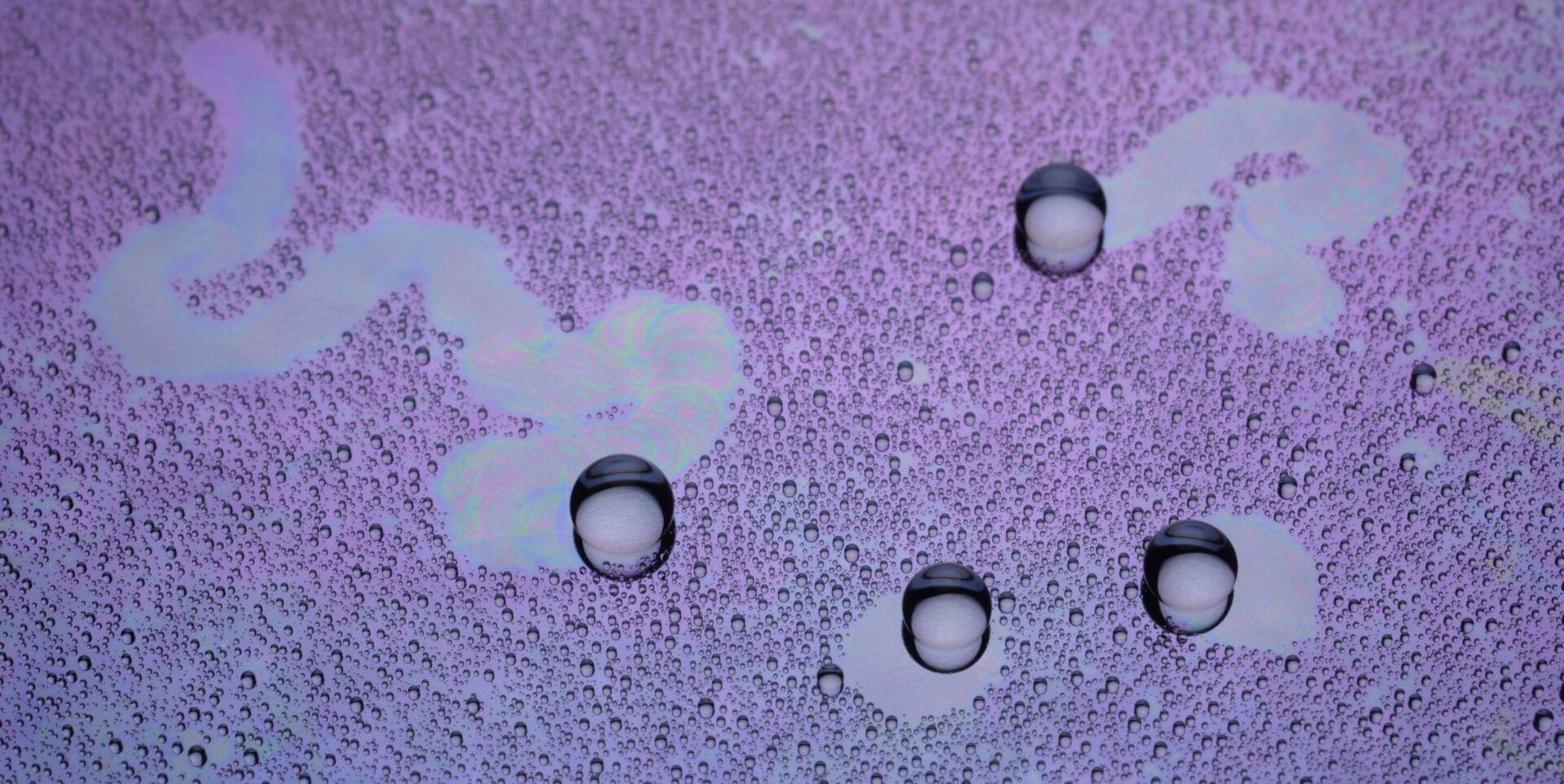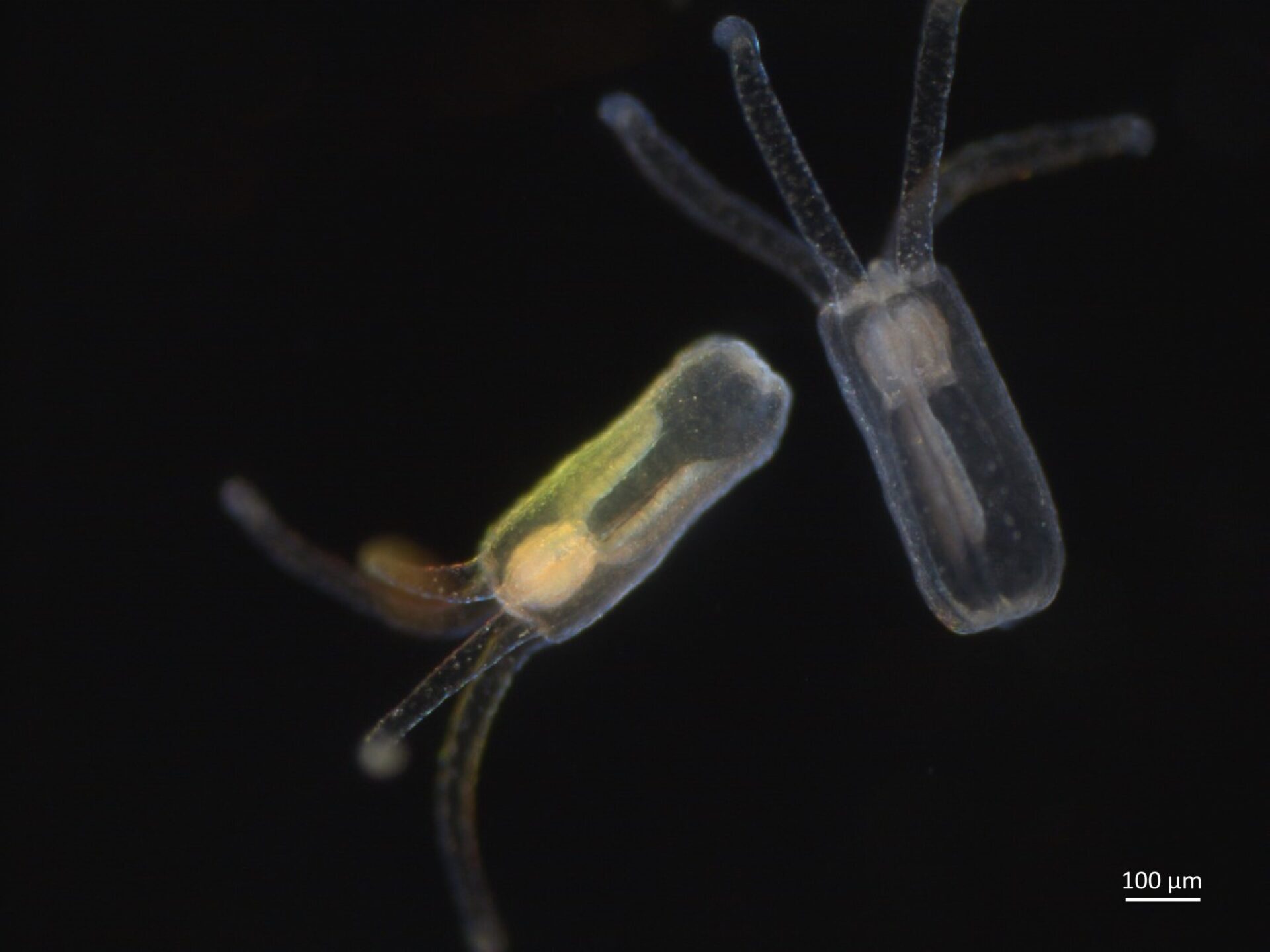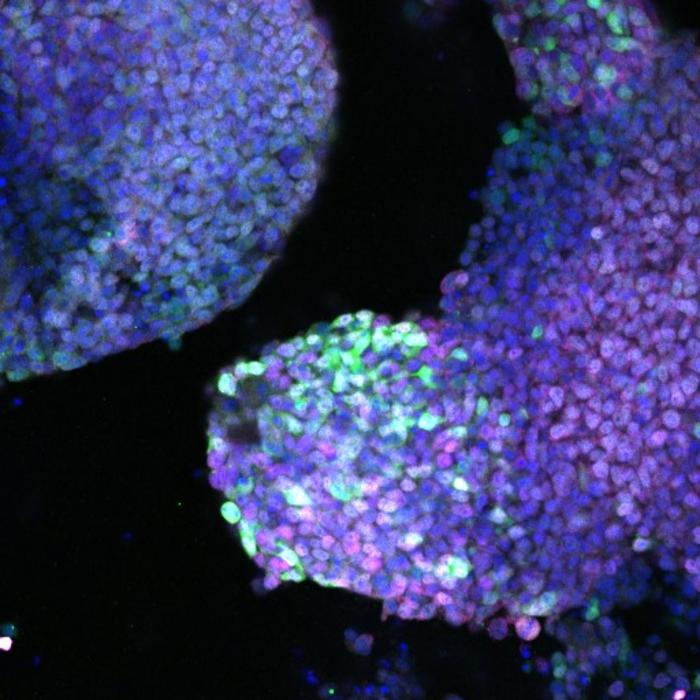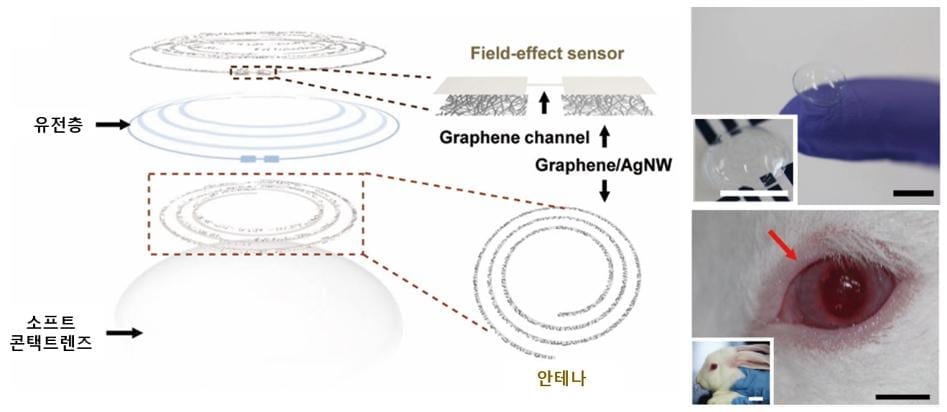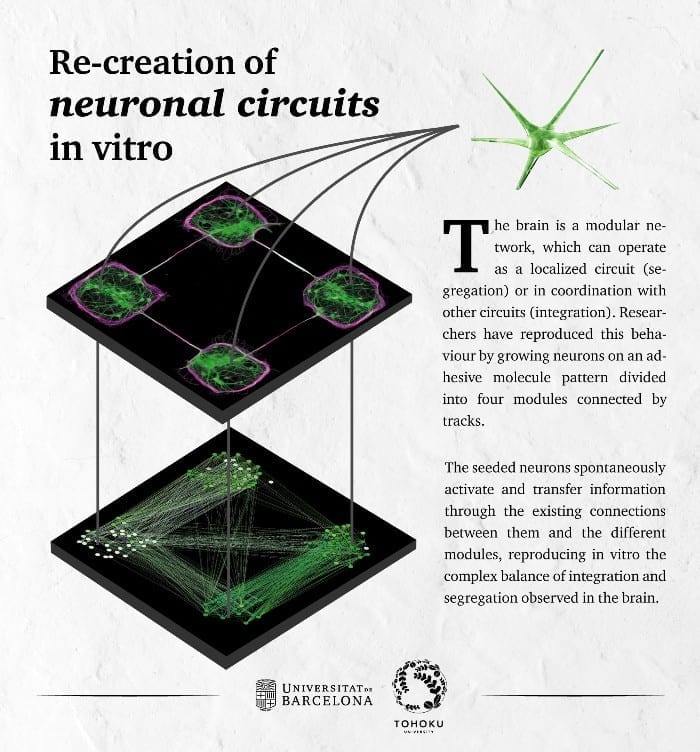
Nanyang Technological University, Singapore (NTU Singapore) scientists have developed a ‘contact lens’ patch with microneedles that could provide a painless and efficient alternative to current methods of treating eye diseases such as glaucoma and macular degeneration.
Current localised treatment methods such as eye drops and ointments are hindered by the eye’s natural defences, blinking and tears. Eye injections can be painful and carry a risk of infection and eye damage. As a result, some patients are unable to keep up with the prescribed regime for their eye ailments, many of which require long-term management.
The proof-of-concept patch, successfully tested in mice, is covered with biodegradable microneedles that deliver drugs into the eye in a controlled release. After pressing it onto the eye surface briefly and gently – much like putting on contact lenses – the drug-containing microneedles detach by themselves and stay in the cornea, releasing the drug over time as they dissolve.
When tested on mice with corneal vascularisation, a single application of the patch was 90 per cent more effective in alleviating the condition than applying a single eye drop with 10 times more drug content.
This novel approach, developed by a team led by NTU Singapore Professor Chen Peng from the School of Chemical and Biomedical Engineering (SCBE), with clinical insights from Singapore National Eye Centre’s Associate Professor Gemmy Cheung, was published in Nature Communications earlier this month.
The team includes Assistant Professor Wang Xiaomeng from NTU’s Lee Kong Chian School of Medicine, and Assistant Professor Xu Chenjie and research fellow Dr Aung Than from SCBE.
Professor Chen, the biotechnology expert who also developed the fat-burning microneedle patch, said this approach could realise the unmet medical need for a localised, long-lasting and efficient eye drug delivery with good patient compliance.
He said, “The microneedles are made of a substance found naturally in the body, and we have shown in lab tests on mice that they are painless and minimally invasive. If we successfully replicate the same results in human trials, the patch could become a good option for eye diseases that require long-term management at home, such as glaucoma and diabetic retinopathy.
“Patients who find it hard to keep up with the regime of repeatedly applying eye drops and ointments would also find the patch useful as well, as it has the potential to achieve the same therapeutic effect with a smaller and less frequent dosage.”
Prof Chen added that the patch could also help to tackle the rising disease burden of eye conditions. A local 2018 study projected that patients with eye diseases in Singapore will rise significantly by 2040, with glaucoma, diabetic retinopathy and age-related macular degeneration cases set to double.
Novel approach in treating eye diseases
Currently, localised treatment options are hampered by the eye’s physiological and structural barriers, including blinking and tears that wash out any drugs applied directly to the eye’s surface.
Topical drugs such as eye drops and ointments require repetitive applications with high dosage as less than 5 per cent of the drug is absorbed by the eye each time, and the drug is quickly cleared out by the eye.
Conventional eye injections can penetrate the surface barriers, but face the same problem or poor drug retention due to the backflow of injected solution and subsequent tear wash-out. Aside from carrying a risk of infection or permanent eye damage, patient compliance is poor due to pain and the need for frequent clinic visits.
Prof Chen added, “These two current methods only produce a burst release of drug with a short effective duration. This is not ideal, especially when treating chronic progressive eye diseases that require slow and sustained treatment, such as glaucoma.”
To tackle these problems, the team developed a 2mm by 2mm patch with nine microneedles that can be loaded with drugs for lab tests.
Each needle, thinner than a strand of hair, is shaped like a pyramid for optimal tissue penetration. The needle is made of hyaluronic acid, a substance found in the eye and is used often in eye drops. A modified version of the hyaluronic acid is added to form a second layer of the needle to slow down the rate at which the needle degrades, ensuring a slower release of the drug.
>Dr Aung Than, NTU research fellow at SCBE, then planned and conducted experiments over a week on mice with corneal vascularisation, a sight-threatening condition where new blood vessels grow into the corneal tissue due to oxygen deprivation. In this study, the researchers loaded the microneedles with DC101, an antibody that targets the growth factor that promotes blood vessel formation.
In mice with the patches applied, there was a 90 per cent reduction in the area of blood vessels with a single treatment dose of 1 microgram. In contrast, when a single drop of the same drug with a much higher dose of 10 micrograms was applied, there was no significant reduction.
There was also no puncture found on the cornea after a week, suggesting that the microneedles are strong enough to penetrate the cornea, but not too stiff to spear through the whole cornea.
Prof Chen said the team has filed a patent, and is currently working on further improving the eye patch technology. They are also looking to partner clinician scientists to study the feasibility of conducting medical trials.
Learn more: NTU Singapore scientists develop ‘contact lens’ patch to treat eye diseases
The Latest on: Eye patch technology
[google_news title=”” keyword=”eye patch technology” num_posts=”10″ blurb_length=”0″ show_thumb=”left”]
via Google News
The Latest on: Eye patch technology
- Best anti-aging eye creams to help you turn back the clockon April 26, 2024 at 8:57 pm
Our guide to the best anti-aging eye creams will help you to rejuvenate the skin around your eyes and reduce the signs of aging, with clinically proven results.
- Did IDF Lure and Shoot Palestinians Using Drones Playing Recordings of Crying Infants?on April 26, 2024 at 4:54 pm
On April 16, 2024, the outlet Middle East Eye reported on alleged acts of cruelty by the Israeli Defense Forces against residents of Al Nuseirat refugee camp in Gaza involving armed quadcopter drones ...
- Big event coming up? Brighten your smile with these No. 1 bestselling Crest Whitestrips, on sale for $25on April 26, 2024 at 1:06 pm
Grab this at-home whitening kit while it's $5 off. It's not a massive discount, but it's nearly 20% off — and $25 is a whole lot cheaper than a professional whitening treatment, which can cost up to ...
- 10 Best Cooling Eye Masks to Keep you Cool and Refreshed all Summer Longon April 26, 2024 at 8:29 am
Indulge in instant relief and relaxation with the best cooling eye masks. Whether you are experiencing eye strain from screen time, lack of sleep, or allergies, these cooling gel masks provide a ...
- Hiking trails may offer a few spring surpriseson April 25, 2024 at 2:53 pm
In the Adirondacks, winter is lingering and there is still snow and ice on some high summits. But here in the Capital Region, spring is in full swing. It’s the perfect time to find a local trail and ...
- The 10 Best Forehead Wrinkle Patches to Make Fine Lines Disappearon April 24, 2024 at 10:46 am
A lesser-known fact about wrinkles and fine lines is that they are not exclusively signs of aging but can also be signs of skin dehydration. These patches are made with a blend of ultra-hydrating ...
- Stellar Blade Update Will Remove 'Unintentional' Reference to Racist Languageon April 24, 2024 at 10:13 am
Sony announces Stellar Blade will receive a day-one patch to remove a problematic graphic that unintentionally references a racial slur.
- Minecraft update adds armadillos: What else is new in patch notes?on April 24, 2024 at 6:26 am
New to Minecraft Bedrock are armadillos, a mob found in the savanna and badlands biomes, as well as eight new wolf variations and wolf armour! There are also new experimental features such as maces to ...
- An Eye for Art: Through film, photography and more, Adam Bowen is on a winding journeyon April 20, 2024 at 12:00 pm
When he lived in Arizona, Bowen had two black and white 35-milimeter film photos exhibited at a film photography art show held at Hidden Light, Flagstaff. The photographs from the show were turned ...
via Bing News


